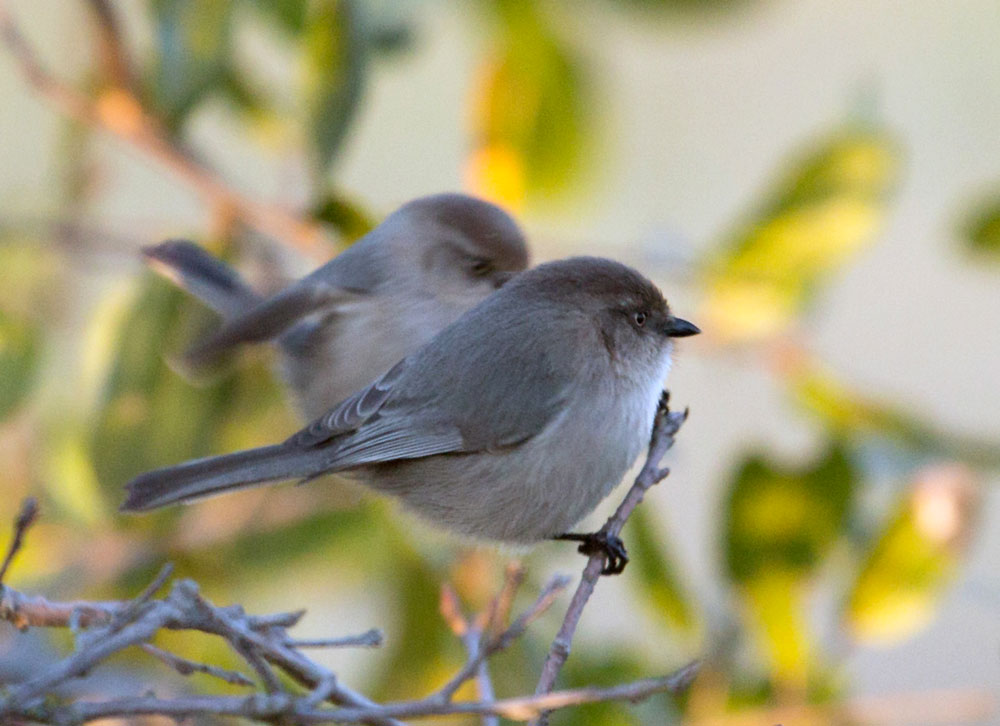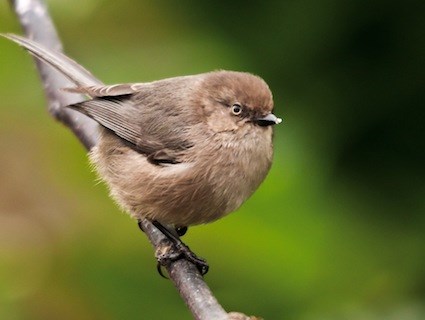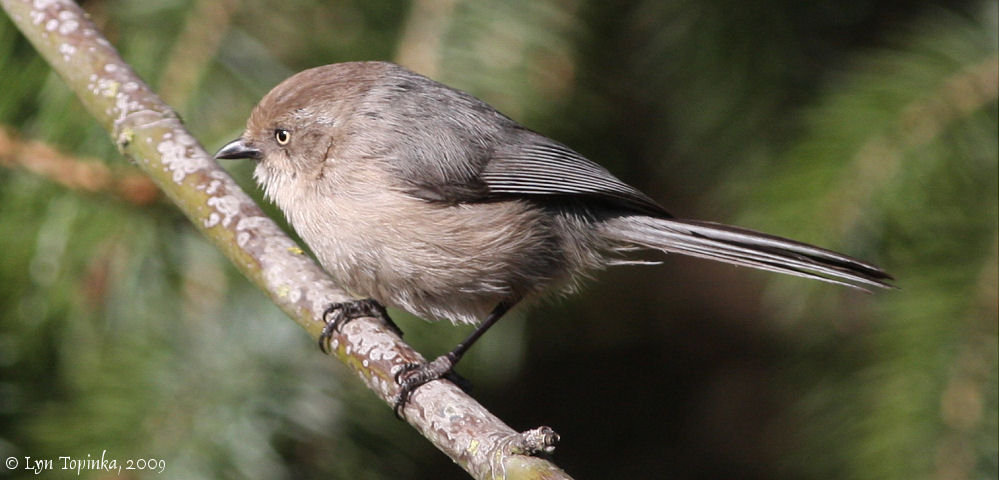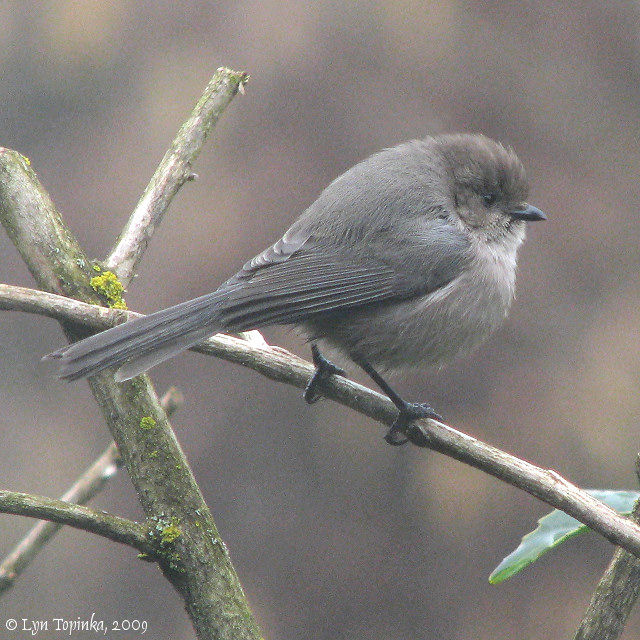
Psaltriparus minimus
TAXONOMY
Psaltriparus minimus Townsend, 1837. Eleven subspecies recognized.
OTHER COMMON NAMES
English: Common bushtit, black-eared bushtit; French: Mйsange
masquйe; German: Buschmeise; Spanish: Satrecito Comъn.
PHYSICAL CHARACTERISTICS
4–4.5 in (10–11.4 cm); 0.18–0.21 oz (5–6 g). Tiny birds with a
variable plumage range. Generally gray above with paler gray
underparts. Coastal birds have brown caps and black-eared
forms have black masks extending back to ear coverts.
DISTRIBUTION
Western United States (extending a little northward into
Canada) and Mexico.
HABITAT
Deciduous and mixed woodlands, parks, and gardens.
BEHAVIOR
A gregarious and active species that forages in large flocks.
Roosts communally, as with other bushtits.
FEEDING ECOLOGY AND DIET
Feeds on insects, spiders, seed, and fruit.
REPRODUCTIVE BIOLOGY
Nests January to June. Nest cucumber-shaped construction of
twigs, moss, and lichen hung from the end of a branch. Clutch
5–7, incubation 12 days, fledging 14–15 days. Occasionally parents
will be helped by other birds, as in long-tailed tits.
CONSERVATION STATUS
Not threatened. Common, and increasing in some parts of its
range.
SIGNIFICANCE TO HUMANS
None known.
Photo Gallery of - Bushtit




 Animalia Life
Animalia Life